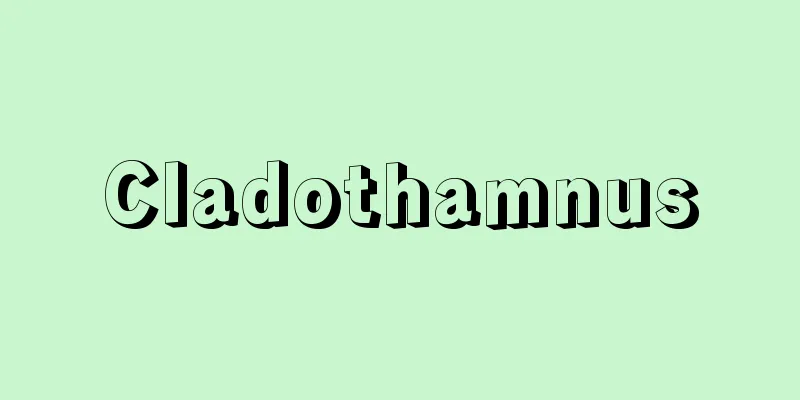Saihoji Temple

|
This temple is of the Tenryuji school of the Rinzai sect and is located in Matsuo Kamigaya-cho, Nishikyo Ward, Kyoto City. The main image is Amida Nyorai. It is called Koinzan and is commonly known as Kokedera. According to the Saihoji Engi, it was founded by Gyoki at the request of Emperor Shomu during the Tenpyo era (729-749), and was one of the 49 temples in the Kinai region and called Saihoji, but its pond garden was the villa of Prince Shotoku. The same record also includes a description of Enro digging a pond here, which is thought to have been related to the founding of Saihoji. During the Kenkyu era (1190-1199), Nakahara Morokazu rebuilt both the temple and the garden, and invited Honen (Genku) to rebuild it, but it later fell into disrepair, so in 1339 (Engen 4, Ryakuo 2), Morokazu's descendant, Settsu no Kami Fujiwara Chikahide, invited Muso Soseki to restore it. Soseki changed the Jodo sect to the Rinzai sect, and changed the name to Saiho-ji Temple, based on the meaning of "The founder came to the West, Goyo Renpou," and also built Tanpoku-tei, Shonan-tei, and Hojo to blend in with the garden. After that, it was revered by the court and common people, and was well protected by the shogunate, and was frequently visited and worshiped by the Ashikaga Shogunate, but the pond garden fell into ruin during the Onin War (1467-1477). It was temporarily restored after the war, but was again destroyed by fire and flooded again during the Edo period. Most of the current buildings were built during the Meiji period. The current garden has lost most of its original appearance, but it is a famous garden consisting of two gardens, one above the other, and has been designated as a historic site and a special place of scenic beauty. The lower garden is a stroll-style garden around Ogonchi Pond (Shinjiike Pond), while the upper garden is a dry landscape garden with a focus on rock formations. It is believed that originally there were two temples, Saihokyoin or Saihojodo-ji Temple on the lower level, and Onriedo-ji Temple on the upper level. Around the pond are the Kannon-do, Shoan-do, Tanpoku-tei, and Shonan-tei teahouses (nationally designated important cultural properties). The current Shonan-tei is a teahouse that was rebuilt and used as a retirement home by Shoan, the second son of Sen no Rikyu, around the Keicho period (1596-1615). When the garden was first created, a bridge was built from the stone wall near Shonan-tei, and a Ruriden (lapis lazuli hall) was placed in the middle of the pond, creating a Pure Land-style garden. The pond and dry landscape garden are in the style of Yamato-e painting, and the stone walls also show influences from the Heian period. Once you pass through the Kojo-kan barrier that leads to the upper level, you will enter a Zen-like state. Along the way, you will see the stonework of Mt. Sumeru and Shito-an, and to the right of these is the dry landscape garden stonework built by Soseki, which expresses the state of Zen. The entire grounds are covered with moss, and there are more than 100 different types. In 1994, it was registered as a World Heritage Site (World Cultural Heritage Site. Kyoto's cultural assets include 17 shrines, temples, and castles, including Kiyomizu-dera). Please note that admission is not for sightseeing, but as a worship service, with fees varying depending on the content of the visit. Advance application is required. [Shigemori Kando] Source: Shogakukan Encyclopedia Nipponica About Encyclopedia Nipponica Information | Legend |
|
京都市西京区松尾神ヶ谷町にある臨済(りんざい)宗天竜寺派の寺。本尊は阿弥陀如来(あみだにょらい)。洪隠(こういん)山と号し、一般には苔寺(こけでら)の名で知られる。『西芳寺縁起』によると、天平(てんぴょう)年間(729~749)に聖武(しょうむ)天皇の勅願により行基(ぎょうき)が創建、畿内(きない)四十九院の一つで、西方寺と号したが、池庭は聖徳太子の別荘であったと伝える。また同記には延朗(えんろう)がこの地に池を掘った記述がみえ、西芳寺の創建とかかわりがあったとみられる。建久(けんきゅう)年間(1190~99)中原師資(もろかず)が堂宇・庭園ともに再建し、法然(ほうねん)(源空)を請(しょう)じたが、のち荒廃したため1339年(延元4・暦応2)に師資の子孫の摂津守(せっつのかみ)藤原親秀(ちかひで)が夢窓疎石(むそうそせき)を招請して復興。疎石は浄土宗を臨済宗に改め、名も「祖師西来 五葉聯芳」の義より西芳寺に変え、また庭園に調和するよう潭北亭(たんほくてい)、湘南亭(しょうなんてい)、方丈(ほうじょう)を建てた。その後、朝野の崇敬、幕府の保護も厚く、足利(あしかが)将軍の参詣(さんけい)、来遊も相次いだが、応仁(おうにん)の乱(1467~77)により池庭も荒廃した。乱後、一時再興されたが、また兵火にあい、江戸時代には再度の水害を受けた。現在の建物のほとんどは明治期の造営である。 現在の庭園は、疎石の造園当時の姿はほとんど失われているが、上下二段構えの庭からなる名園で、史跡・特別名勝に指定されている。下段は黄金池(おうごんち)(心字池(しんじいけ))を巡る池泉回遊式庭園、上段は枯山水(かれさんすい)の石組中心の枯山水庭園となっている。もとは下段に西方(さいほう)教院あるいは西方浄土(さいほうじょうど)寺、上段に厭離穢土(おんりえど)寺の2寺があったとみられる。池の周りには観音(かんのん)堂、少庵(しょうあん)堂、潭北亭、湘南亭(国の重要文化財)などの茶室がある。現在の湘南亭は慶長(けいちょう)(1596~1615)ころ千利休(せんのりきゅう)の次男少庵が再興、隠棲(いんせい)した茶室である。作庭当初は湘南亭付近の石垣部分から橋を架け、池中に瑠璃殿(るりでん)があり、浄土風庭園をなしていた。池泉・枯山水の意匠も大和絵(やまとえ)的で、石垣にも平安時代の影響がみられる。上段に通じる向上関をくぐると、ここからは禅的な境地が展開される。途中に須弥山(しゅみせん)の石組、指東庵(しとうあん)などがあり、その右手には疎石の築いた枯山水の石組があり、禅の境地を表現している。境内一帯は苔で覆われており、その種類は100種を超えるという。1994年(平成6)、世界遺産の文化遺産として登録された(世界文化遺産。京都の文化財は清水寺など17社寺・城が一括登録されている)。なお、拝観は、観光としてではなく参拝冥加(みょうが)料としてその内容により料金が異なる。事前の申込みが必要。 [重森完途] 出典 小学館 日本大百科全書(ニッポニカ)日本大百科全書(ニッポニカ)について 情報 | 凡例 |
Recommend
Glis glis (English spelling) Glisglis
…It is designated as a national natural monument....
Maki [town] - Maki
This old town occupies the central-western part of...
Maria Chapdelaine
…After living as a journalist in England, he trav...
Kukulkan - Kukurukan
...The ruins cover an area of 3km x 2km, and cu...
Suzuka Mountains
A mountain range stretching approximately 55 km n...
Amanohashidate
A sandbar that separates Miyazu Bay, which faces ...
Ayasugi (woven fabric)
...A type of twill woolen fabric, so named becaus...
Albatross (bird)
...It is a symbol of the ocean and long voyages, ...
Asahi [city] - Asahi
Located in the northeastern part of Chiba Prefectu...
Consommé (English spelling)
...There are hundreds of different types, but acc...
Elagabalus
Ancient Roman Emperor (reigned 218-222). His real...
Steatopygia
This refers to buttocks that protrude significant...
Military Assistance Program
...Since the 1970s, the emphasis has been placed ...
Warm front - Ondanzensen
A front in which the warm air mass is dominant an...
Siwalik Hills
The hills lie along the southern edge of the Himal...







![Tamano [city] - Tamano](/upload/images/67cc260d62664.webp)

